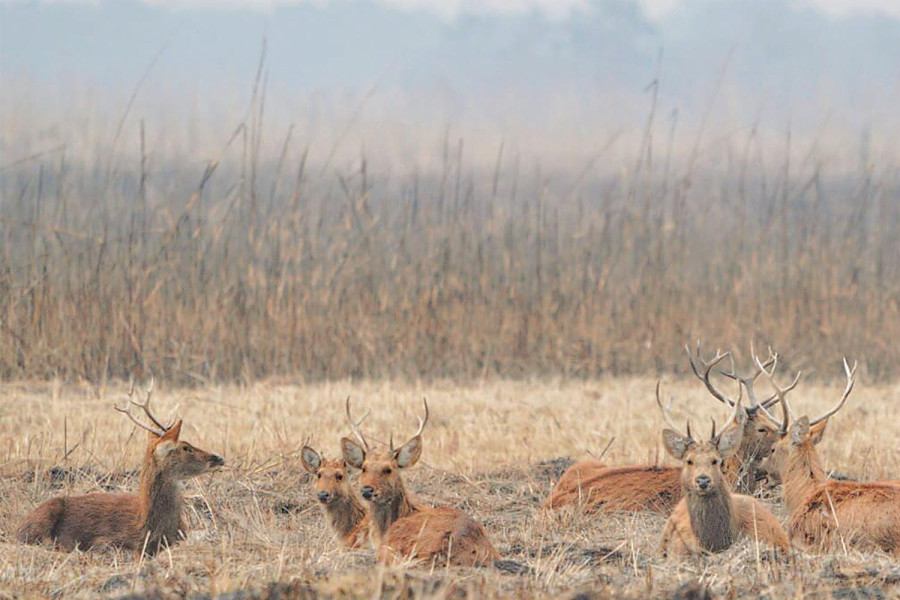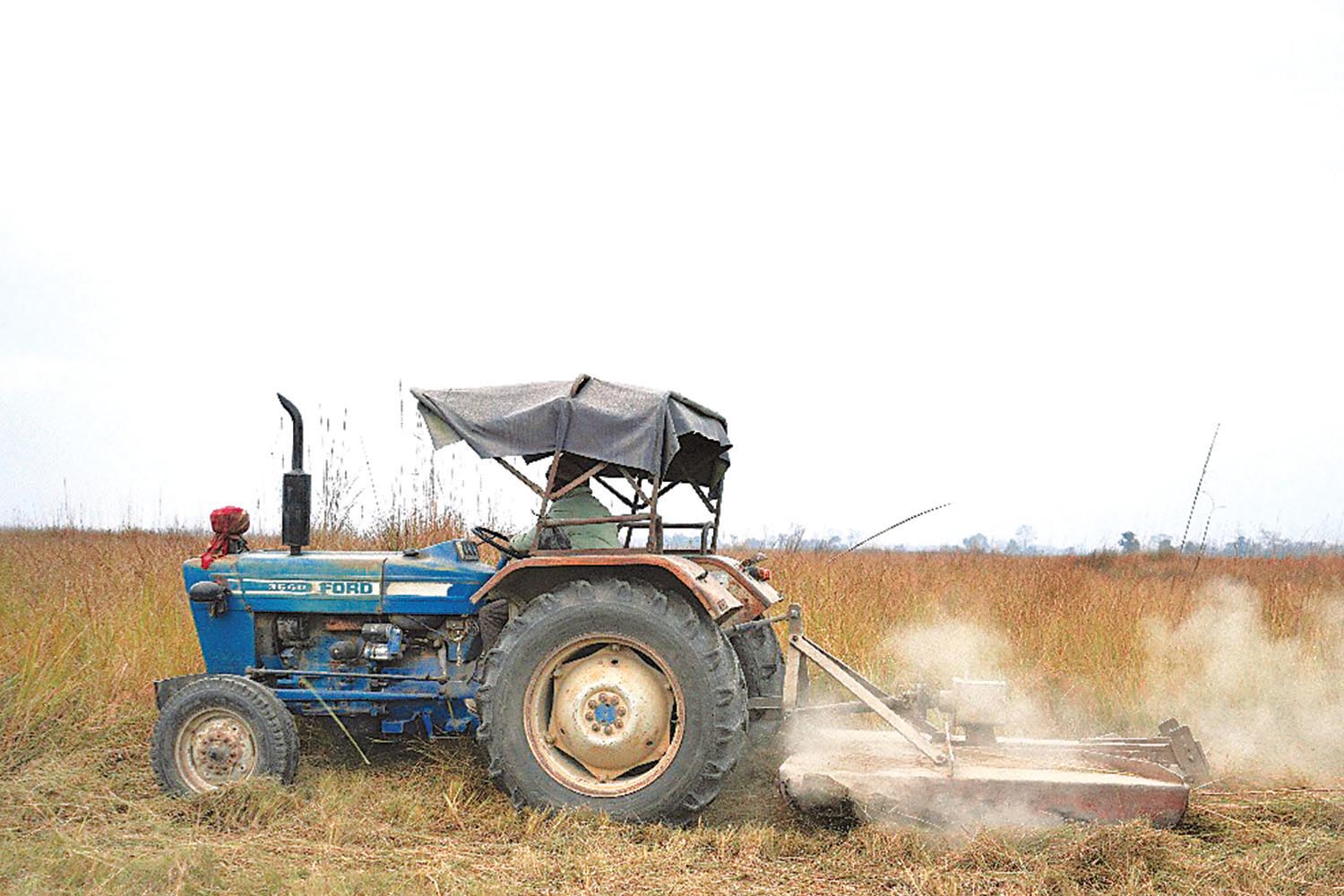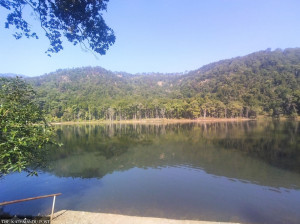Sudurpaschim Province
Shuklaphanta National Park ramps up grassland management to preserve swamp deer habitat
As per the latest count, the national park spread over 305 square kilometres is home to more than 2,300 swamp deer.
Bhawani Bhatta
In some areas, workers are busy cutting grass, while controlled bonfires are being conducted in others. New sprouts are growing in the place where dried grass was burnt recently. Grassland management efforts are currently being carried out vigorously inside the Shuklaphanta National Park to ensure an adequate food supply for swamp deer.
“The grassland management work generally begins from mid-January and continues till mid-June every year. Various tasks are being carried out simultaneously in different grassland areas,” said Manoj Air, conservation officer at the national park. According to him, around 150 to 200 hectares of grassland are managed every year.
The grasslands of Shuklaphanta National Park, the country’s second youngest national park after the Parsa National Park, is the main habitat of swamp deer. The park’s grasslands covering an area of 54.5 square kilometers are one of the largest in South Asia. According to conservationists, the vast grasslands should be managed on a regular basis to create a proper habitat and feeding environment for wild animals, mainly the swamp deer.
The swamp deer (Rucervus duvaucelii), known as barhasingha in Nepali, face shortage of food during the dry season—from April to June—as grasses fade due to scorching heat. So the park authorities manage various plots of grassland on a rotational basis.
According to the Shuklaphanta National Park, at present the grassland management work is underway in around 63 hectares. The national park, Air said, awarded a contract at Rs1.5 million to manage the grasslands. The National Trust for Nature Conservation, the Zoological Society of London, the Tarai Arc Landscape Project among other organisations working in the conservation sector have also been assisting the grassland management work.

Conservationists say that swamp deer will face a shortage of food if the grasses are overgrown. According to Air, while some birds and animals may be affected while disposing of overgrown grasses, it has a larger positive impact.
“Before cutting and burning the grass, fire lines are made to prevent the fire from spreading to other areas. Workers should be deployed on all sides of the grassland with water to douse the fire in case it spreads,” said Air. According to him, calm and cloudy days of winter are suitable to carry out controlled bonfires.
Park officials are also studying about grasses and grassland management. “The study is mainly focused on finding the places where the grasses grow well and whether the wildlife likes such grasses or not. Data collection has been completed and currently it is being analysed,” said Air. “We will develop a plan to grow the grass species preferred by swamp deer.”
Established as a wildlife reserve in 1976 and declared a national park in 2017, Shuklaphanta is located in the southwestern corner of Nepal in the Sudurpaschim province. As per the latest count, the national park is home to more than 2,300 swamp deer.
Seven years ago, around two dozen swamp deer were translocated to Bardiya and Chitwan national parks from Shuklaphanta. But the drive hit a snag as the shifted deer species could not survive in the new habitats. According to the Shuklaphanta National Park officials, all the swamp deer sent to Bardiya and Chitwan died.
Swamp deer are the prey animals for tigers. An increase in swamp deer population is supposed to benefit the big cats. Shuklaphanta National Park, which is spread over an area of 305 square kilometres, is home to 36 adult tigers.




 16.12°C Kathmandu
16.12°C Kathmandu












